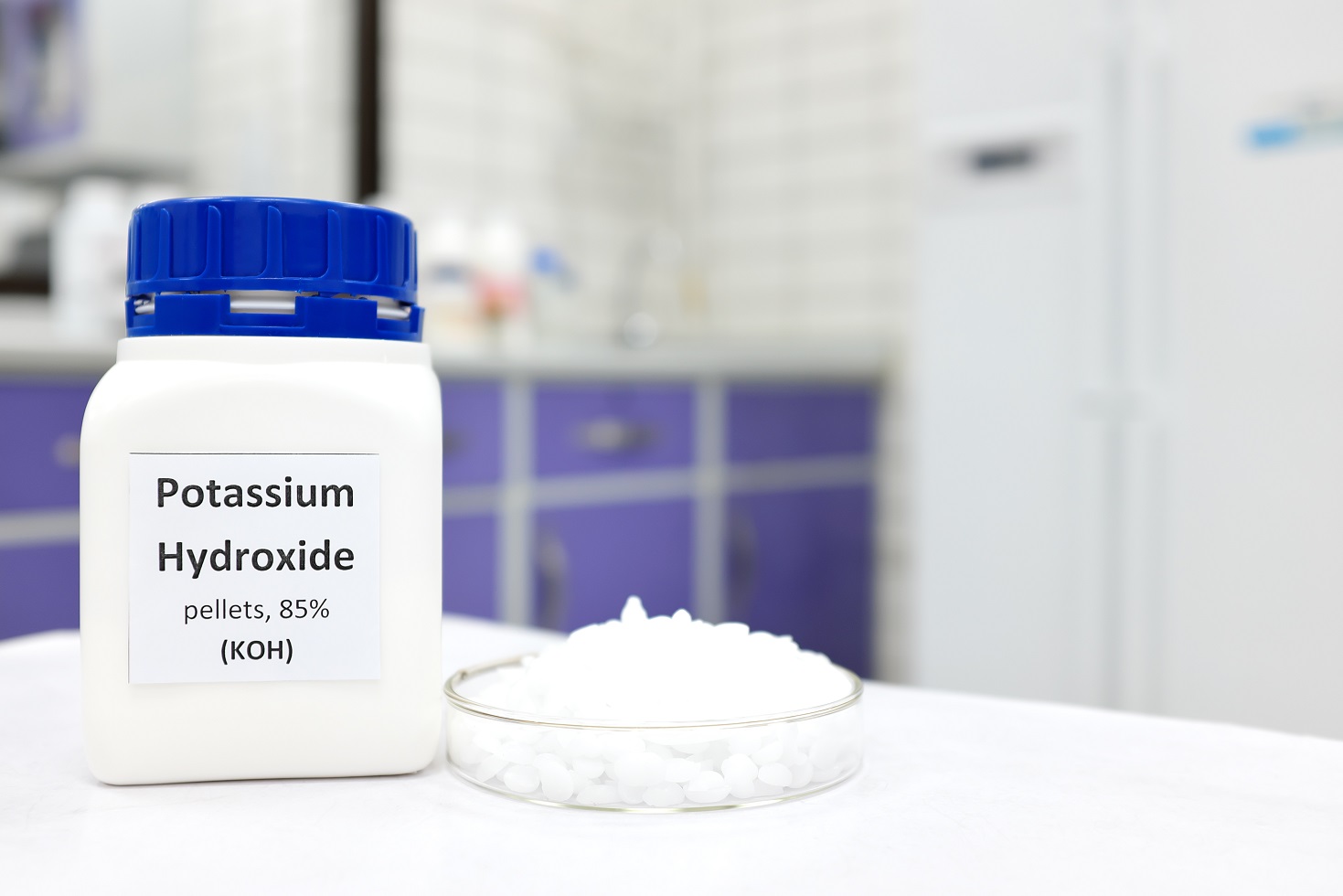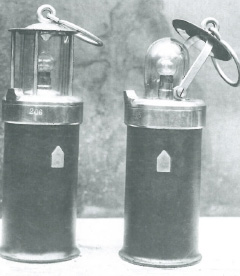Abbreviated as KOH and also called caustic potash or lye, potassium hydroxide is a strong base, and as such it dissociates into ions when dissolved in water. Which is why it's used as the electrolyte in alkaline batteries including nickel-cadmium, nickel-iron, nickel-hydrogen, and nickel-metal hydride. In fact, KOH solution at its usual concentration used in alkaline electrolytes offers higher ionic conductivity compared to sodium hydroxide (NaOH). This significantly reduces the carbonation of electrolytes, preventing higher rate of capacity degradation and pre-mature failures of batteries.
The electrolyte in most industrial nickel-cadmium batteries is an aqueous solution of KOH in a concentration of between 1,25g/cm³ and 1,30g/cm³ for pocket plate cells and about 30 percent in sintered cells. KOH-based Ni-Cd electrolytes often contain between 0.4 and 3 weight percent of lithium hydroxide (LiOH) as an additive, and sometimes NaOH is added too. While KOH exhibits high thermal stability, which adds to the ruggedness of Ni-Cd batteries, the latter two compounds are added to improve low temperature performance thanks to a much lower freezing point.
Useful in many ways
However, KOH has many other industrial applications, most of which utilize its caustic nature and its reactivity toward acids. KOH is used as the precursor to, or for the preparation of numerous potassium-containing chemicals, including a range of potassium salts and various silicates. It is used in liquid fertilizers, and because of its high affinity for water, KOH serves as a desiccant, i.e. a hygroscopic substance inducing or sustaining a state of dryness.
The latter application includes food as well, where tiny quantities of KOH are also used as a thickener, pH control agent and stabilizer known to Europeans as E525. Being so corrosive, KOH is well suited for degrading various materials, for instance to hasten the decomposition of soft tissue or hair. It's highly soluble and, unlike common soaps, even in salty water, which is why the so-called sailors' soap is based on potassium.
KOH could also become important in the energy sector – beyond its usage in batteries, of course. It may serve as catalyst for hydrothermal gasification, an innovative approach to processing sewage sludge or food waste. This technology allows to recover materials that can be used in fertilizers, with the byproduct being a kind of biogas mostly composed of methane, but still climate neutral as its source is mostly biological of nature. And last but not least, alkaline water electrolysis is increasingly being used for industrial production of hydrogen as a prospective source of clean energy.
How it's made
In pre-industrial times, potassium-bearing compounds including KOH were obtained from wood ash combined with water. Called potash, these materials have been used in bleaching textiles, for making ceramic or as soap since the Bronze Age. Later, KOH was manufactured by mixing potassium carbonate with calcium hydroxide or slacked lime, as it is called traditionally.
However, since the late 19th century, the method of choice for preparing KOH is electrolysis. A solution of potassium chloride (KCl) is subjected to a steady current which unbinds chlorine from potassium and breaks up water molecules. The hydroxide can then bond with potassium to form KOH, and as byproducts, hydrogen gas is released on the cathode side and chlorine at the anode.
Potassium hydroxide is being prepared in various forms, including pellets, flakes, and powder.
|






